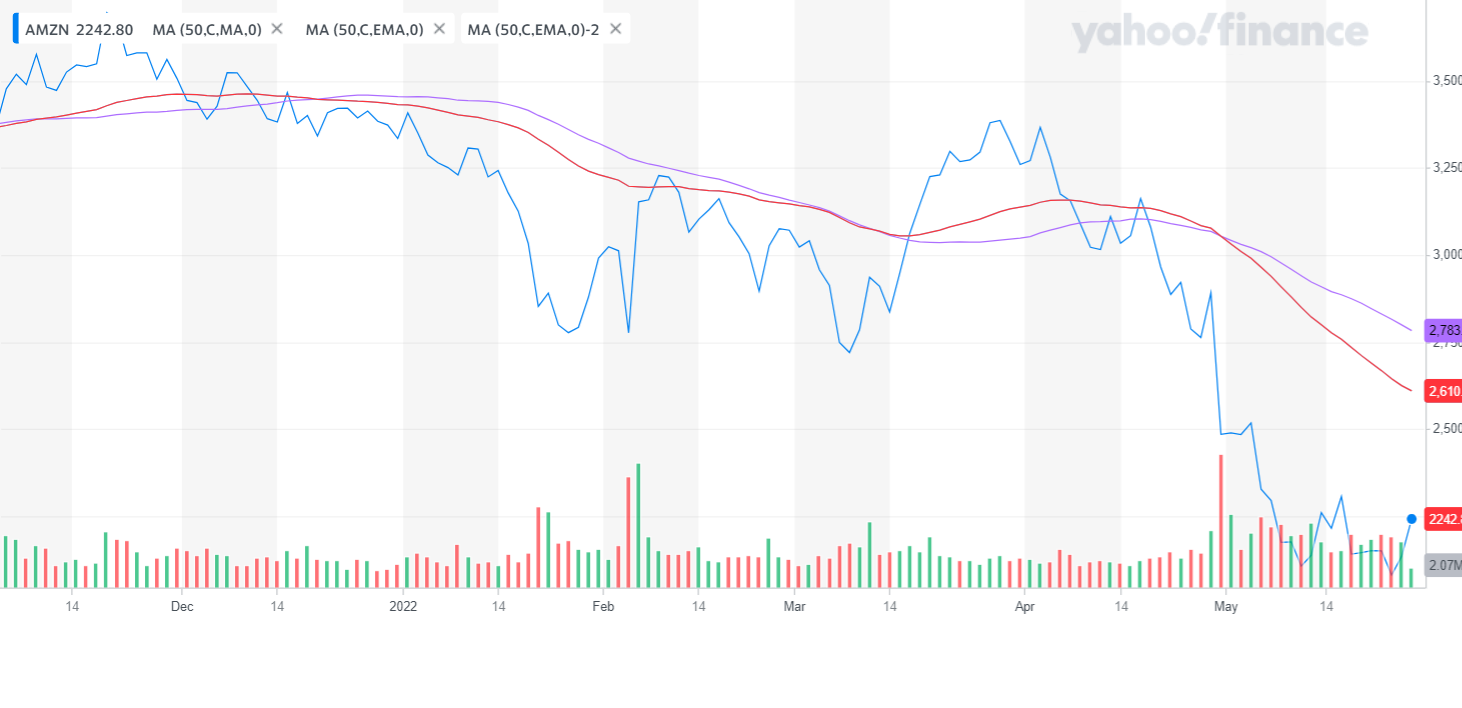What is a moving average and how can it benefit you?

In finance, a moving average is used as a technical analysis tool to smooth out price data. The calculation analyzes a large number of data points to create a series of averages, each representing a different time period. Think of it as trying to eliminate the noise to create a somewhat clearer representation of where a stock is moving.
For example, within a week a stock can swing up or down by a lot. Although these data points are accurate, they might not represent the big picture to an investor who is trying to get an idea of how that stock reacts over a period of time. Thus, moving averages can offer a better idea of a stock’s price trends.
The moving average is an important tool as traders can use them to help predict what may happen, given prior performance, and to show any significant change up or down as early as possible.
How moving averages work
Technical analysis seeks to evaluate price movements through historical price data. One such indicator used in technical analysis is the moving average. It helps to inform the overall picture of a stock’s inherent or fundamental value with its real market fluctuation. Known as a lagging indicator, since the information trails the asset’s price, moving averages are important as they allow analysts to predict the potential direction of a stock before it happens.
Moving averages are calculated by adding up all the data points during a particular period and then dividing that sum by the number of time periods used – much like we calculate regular averages in arithmetic.
The same applies to the moving average, except the calculation is done for a snapshot in time, and instead of one subset there are many. These multiple subsets can then be plotted on a graph representing the calculations.
In a 5-day moving average, for example, you simply add up the closing prices for the stock for the past 5 days, then divide the sum by 5. If you’re creating a 5-day moving average over a full year, you’ll wind up with hundreds of data points plotted on a graph, with each point showing the average of the prior five days of prices.
The same applies for any other period of time in days you wish to calculate for. Traders often look at the 50-day and 200-day averages to look at price trends. The 50-day simple moving average is usually thought of as an ideal medium point between long- and short-term periods.

Source: Yahoo Finance
Types of moving averages
The simple moving average (SMA) is the most widely used. It is called the simple moving average because each data point is equal-weighted in the calculation. The SMA can be 5-day, 13-day, 21-day or any period of time that a trader finds useful.
Analysts can use the simple moving average as a signal to buy or sell. If a price movement breaks above the SMA, it could signal an opportunity to buy. If the moving average then begins to also trail up, this is used to confirm the buy decision. Conversely, if price movement starts to break below the SMA, it could be a signal to sign to sell. The moving average, as seen in the picture above, is drawn on the same graph as actual price movements.
The exponential moving average (EMA) is similar to the SMA in that it measures the average trend of a stock price over a period of time, but it represents more current price swings as it gives greater weight to more current data. EMA calculations apply the most weight to the most current price data, and the least amount of weight to older price data.
The EMA gives traders an up-to-date moving average, and can allow for the discovery of price trends sooner.
Important to note: moving averages, whether SMA or EMA, are not meant to discern the exact top or bottom of a price, but rather to identify trends before or as they are happening.
Both the SMA and the EMA have a lag. However, the EMA has a shorter lag than the SMA.
Indicators that complement moving averages
The SMA and EMA are useful, but rarely used in isolation as a trading strategy. Often, analysts and traders will employ other indicators that use the moving average as a basis.
ADX
Average directional movement index – Used to see how strong a particular price trend is, this indicator reflects how much the price of a stock expands or contracts over time. This indicator is used to determine whether there is an actual trend in a market or if prices are simply moving up and down and to further identify the strength of a price trend in the event it does exist.
MACD – Moving average convergence/divergence
This indicator shows the relationship between a stock’s two exponential moving averages. The calculation actually turns two moving averages into a line by taking the shorter moving average minus the longer moving average. Traders then compare the MACD line against a signal line (usually a 9-day EMA of the MACD line) to trigger buy or sell decisions. A buy signal is triggered when the MACD crosses above the signal line and a sell when it dips below.
Bollinger bands
Bollinger bands are considered a price “envelope.” This is because graphically they chart the price range levels above and below a simple moving average of the price of a stock. This indicator helps to determine whether prices are relatively high or low, or what traders call “overbought” and “oversold” conditions.
Pros and cons of using the moving average
Pros
Technical indicators like moving averages supply traders with important information.
- Moving averages provide more perspective on prices. Technical indicators can provide a piece to the overall puzzle of price movements, especially for trailers who are following a stock closely.
- Moving averages smooth out the noise. By accounting for large periods of time, this indicator allows investors to focus on larger trends rather than day-to-day fluctuations.
- They can help during volatile markets. In a bear market or recession, moving averages can give a clearer picture of how a stock is performing versus overall market conditions.
Cons
- Overlooked fundamentals. The main pitfall of using technical indicators like moving averages is that fundamental factors are not taken into account. The technical indicators are just that – technical data. Fundamental factors like revenue, price-to-earnings ratios, earnings per share and the return on equity are overlooked when looking at price trends alone.
- Volatility might not be explained. A fundamentally sound company could display price volatility based on extraneous market factors (like a pandemic, supply chain disruptions or policy changes) and still maintain its inherent value. The reasons why a stock moved will not be reflected in a technical indicator like a moving average.
- They can contradict each other. A group of SMAs for the same stock may indicate contradictory things. For example, a moving average might show a downward price trend in the 10-day SMA that is smoothed out in the 120-day SMA. Traders usually follow the 50-day SMA, as it is a good point in between long and short time periods.
- The past does not guarantee the future. One of the best arguments against moving averages is the mantra of financial advisors and traders everywhere – past performance is not indicative of future results. Stocks can swing wildly from one day to the next, and unexpected movements are an expected part of trading. Technical indicators like the SMA or EMA simply provide data of what has already happened.
Bottom line
Technical analysis in general and moving averages specifically are not enough on their own to give a holistic picture as to a stock’s overall performance, but they provide meaningful information to investors. Moving averages smooth out price data and can represent points of support or resistance in a security’s price, which is useful information regardless of whether or not it is all-encompassing.
Editorial Disclaimer: All investors are advised to conduct their own independent research into investment strategies before making an investment decision. In addition, investors are advised that past investment product performance is no guarantee of future price appreciation.






